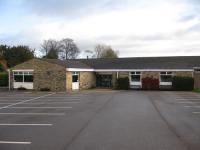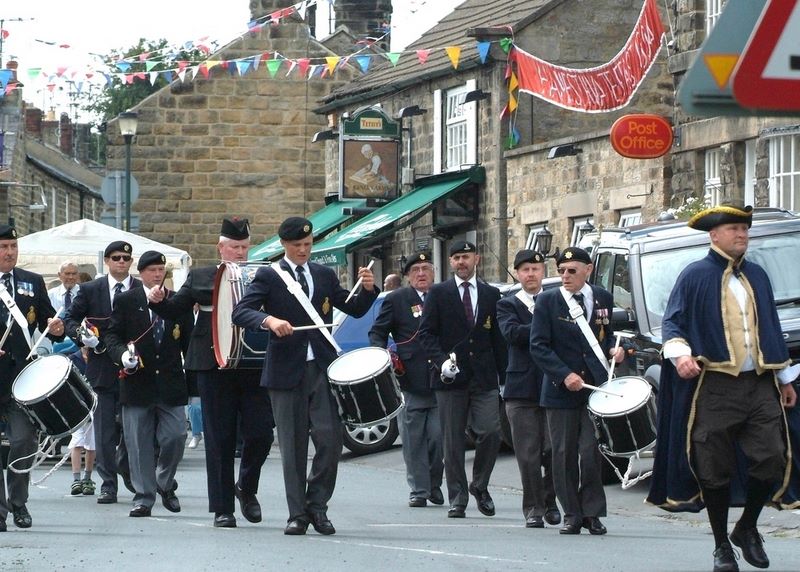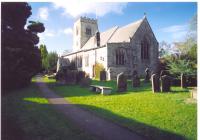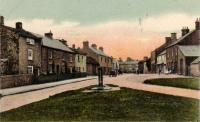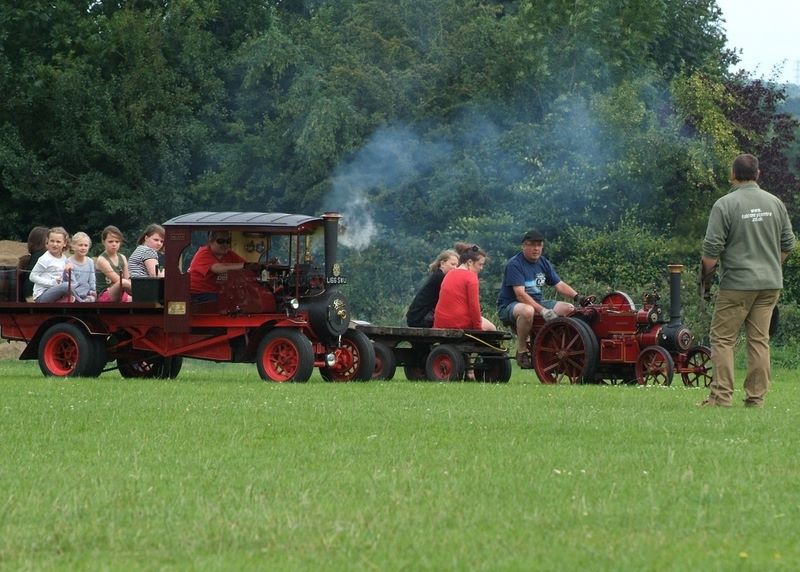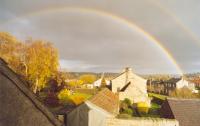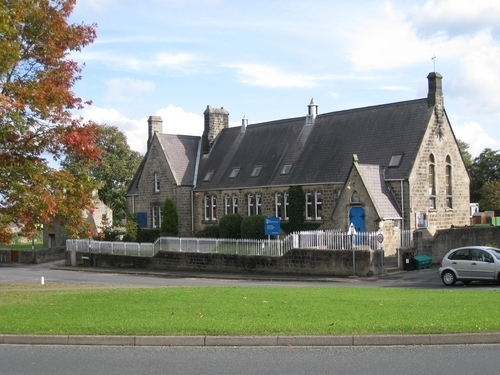Recent articles
© DT Online 2010 - 2025
| Tom Wright reflects upon the Barker family in HampsthwaiteAs far as I can ascertain there were no Barkers in Hampsthwaite prior to the 18th century. The earliest reference I could find was to the marriage of John Barker, a tailor, to Ann Messenger (daughter of William Messenger) in the parish church sometime near the beginning of the 1700s. I don’t know from whence he originated. They had several children, as did all the Barkers, but I have only recorded my own direct ancestors. They were his son James Barker (1744) & Hannah Dousland; William Barker (1781) & Catherine Swale; John Barker (1810) & Mary Nutter; George Barker (1845) & Sarah ??? who themselves produced Rowland Barker and siblings. He married Eliza Jackson (from an even older family in Birstwith) and they were my maternal Grandparents. (See also Barker Family History circa 1914-18 and Descendants of John and Grace Barker) William became a stone-mason and set up the family business which the majority of the male members of the Barker family joined right up to the 20th century. They built most of old Hampsthwaite and surrounding villages including the Methodist Chapel and some of the Parish Church and much of Victorian Harrogate . . . . . blind Peter Barker was a renowned joiner and some of his work can be seen in the church today.
By the end of the 19th century the Barker family had multiplied into many branches and their female children had married into a great number of local families so Hampsthwaite was one vast pool of Barker genes! (check out the 1891 census!). The 20th century started its decline as the train and, later, cars and buses enabled easy travel and dispersal to wider fields. The War Memorial is also testament that WW1 took its toll of a single generation who all volunteered together. There are now very few of the family named Barker to be found within miles and I am not sure if there are any left in Hampsthwaite. In 1900 Rowland had not joined the family firm but was a journeyman slaughterer/butcher killing and jointing animals for individual farmers. He was living with his wife Eliza and their first daughter Ethel May (my mother) in the ‘one-up ,one-down’ cottage called “Itchicoo” by the village green (so named because of the pigeon which roosted in the roof). It is now known as “Marie Claire”. When a second child was due they moved to live with relatives in the long cottage facing the stream in Hollins Lane behind the village corner-shop. Not long afterwards they moved into Pump Cottage where he ran the butcher’s shop for a Killinghall butcher. The two bungalows behind it were his slaughter-house and butchery. The shop was, I think, where the garage now is. Life was hard for their children and, as a very young girl, my mother had to walk to far-flung farms to fetch an animal, drive it alone along lanes back to home for her father to slaughter then scrape its stomach clean to make tripe and use its fresh blood to produce black pudding. She hated it! She told me many anecdotes about life for the young in Hampsthwaite during those years. One about the attitude of the Church in those days is interesting. Her family were Chapel folk. They attended the chapel at the top of Hirst Lane at Clapham Green every Sunday but the school was run by the Church which insisted on every pupil going to its Sunday School each week. If anyone missed an attendance they were banned from the school for the whole of the following week and if they missed for three successive weekends they were expelled from the school entirely. How Draconian! At 14 years of age my mother went into service and became housekeeper/cook at Darley Vicarage. On Sundays she prepared the Vicar’s breakfast then, while he took the morning service, she cleared up and fed and groomed the pony before harnessing it to the trap for him to travel to services at Thornthwaite, Dacre and Hartwith. She was then allowed the rest of the day to walk along the road and river to have lunch with her parents as long as she was back in time to have tea ready for him when he returned. While he was eating that and then taking his final service of the day, she fed, groomed and bedded down the pony (she called it “ostling”) before preparing and serving his dinner. After clearing up, the rest of the evening was occupied by a session of him tutoring her to improve her reading – vicars were, of course, usually from “upper-class” families and, after Oxford or similar universities, better educated than even the Squire in the village. That was considered her weekly day off!
My mother benefited from her spell at Darley Vicarage where she learnt etiquette and how to behave generally when among the “gentry”. I’m not sure when she left there but was obviously back home living in Hampsthwaite by the time she was a young woman going to dances after the war.
Rowland and his wife eventually separated and Eliza moved to Leeds with her two daughters (now young adults) where they ran a boarding house (where the Merrion Centre now stands) for performers at the City Varieties.
Rowland remained in Hampsthwaite and when the butchers shop later closed he became the village roadman keeping ditches clear and Hampsthwaite tidy for the County Council and living in a caravan behind the Joiners Arms. A sad end for someone who was so very athletic for many years and repeatedly won the Feast annual run from the village through Clint, Birstwith, Felliscliffe and back to the village. The photograph is thought to show Rowland and Eliza late in their lives and apparently attending a wedding. After her move to Leeds my mother got employment as a “Gentlewoman’s” companion/housekeeper/cook with whom she moved to Guildford in Surrey, met my father during a visit to a large country house where he was a groom/under-gardener and married in 1930. She raised our family of three children through the great recession and WW2 but never returned to Yorkshire except to the funerals of her parents until I moved here in 1969 after which she enjoyed an annual visit to her roots. She died in 1981 after a stroke had blinded her three years earlier.
Her sister, Lucy, was 10 years younger and I don’t know a lot about her except that she married and moved to Yeadon near Bradford. I don’t think she had any children. Her even younger brother, Donald (“Donny”), stayed with his father in Hampsthwaite until he married and moved to New Park in Harrogate where he had two daughters. He was an industrial painter of large structures like bridges and gas-holders. When he died the Barker surname ended for my branch of the family. He and Eliza are buried with all his ancestors in Hampsthwaite churchyard. PostscriptA few more of the anecdotes I heard from my mother…..
Tom Wright reflects upon the Barker family in Hampsthwaite As far as I can ascertain there were no Barkers in Hampsthwaite prior to the 18th century. The earliest reference I could find was to the marriage of John Barker, a tailor, to Ann Messenger (daughter of William Messenger) in the parish church sometime near the beginning of the 1700s. I don’t know from whence he originated. They had several children, as did all the Barkers, but I have only recorded my own direct ancestors. They were his son James Barker (1744) & Hannah Dousland; William Barker (1781) & Catherine Swale; John Barker (1810) & Mary Nutter; George Barker (1845) & Sarah ??? who themselves produced Rowland Barker and siblings. He married Eliza Jackson (from an even older family in Birstwith) and they were my maternal Grandparents. (See also Barker Family History circa 1914-18 and Descendants of John and Grace Barker) |






